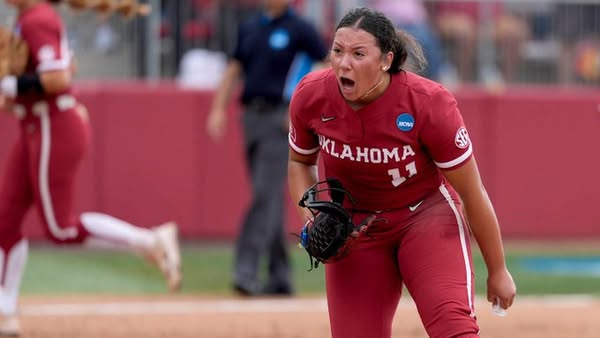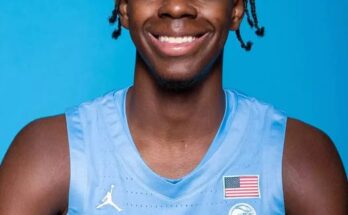First, let’s set the scene. Ahead of the 2026 season, Oklahoma boasts eight pitchers on its roster. Coach Gasso and pitching coach Jennifer Rocha must blend veterans, transfers, and top freshmen into a cohesive unit
- Sophomore: Audrey Lowry
- Redshirt freshman: Sophia Bordi
- Transfers (portal additions): Miali Guachino (Ole Miss), Sydney Berzon (LSU)
- Incoming true freshmen: Allyssa Parker, Berkley Zache
Berzon, LL‑season All‑SEC with a 2.46 ERA, is expected to take the Friday starter slot, while Monticelli remains the experienced reliever (si.com). The rest of the rotation battles out among returning and incoming talent—further complicated by the potential contributions of freshmen, who may redshirt but could also provide immediate impact.
This eight‑pitcher roster is not just impressive—it’s indicative of a strategic shift: OU is constructing a multi‑headed rotation rather than leaning heavily on a single ace. That’s a major evolution from past years and reflects Gasso’s adaptability .
Gasso has increasingly moved toward rotation by committee—spreading innings across multiple arms. Consider:
- Post-2016: Gasso emphasized distributing workload to survive postseason depth challenges.
- 2021 & 2023: OU used 6–7 pitchers, though only 3 logged over 20 innings. This larger staff provided flexibility (si.com).
On a recent Reddit thread summarizing a March 2025 weekend, a fan noted:
This shows Gasso and Rocha not only trusting but relying on a mix of arms in live game situations. With eight pitchers for 2026, that committee formula is only more essential.
Patty Gasso’s management of such a deep rotation will revolve around three core pillars:
- Friday Starter: With the strong track records and pedigree, Sydney Berzon is expected to anchor the weekend opener (si.com).
- Spot Starters & Relievers: Deal, Monticelli, Lowry, and Guachino will rotate through mid-week and second starts, as assessments from spring and fall drills emphasize development and adaptability.
- Emerging Talent Development: Redshirt freshmen Bordi, Parker, Zache represent long-term investments—their workload will be carefully managed.
Gasso’s fall playlist hinted at this structure. As reported:
This transparent naming gives structure and clarity to each pitcher’s path.
- Injury avoidance is crucial. In 2025, Lowry missed nearly a month, underscoring the need to pace key arms .
- Freshmen redshirting: Bordi and Parker may sit the year to preserve pitching eligibility—unless circumstances force an early debut .
- Diverse arm management: By diffusing innings across eight arms, Gasso reduces overuse and ensures late-season resilience.
Such workload planning is essential for consistent performance and postseason readiness.
- Healthy competition: Pitchers vie for innings, which sharpens performance and holds veterans accountable.
- “Lioness” mindset: Inspired by the Paramount+ show, Gasso instills an aggressive, resilient mentality—hunters, not hunted (si.com, on3.com).
- Constructive feedback: Gasso fosters open communication and hard conversations, reinforcing maturity and competitiveness .
This competitive culture drives individual growth within a team orientation.
The portal has reshaped Division I softball. Gasso has responded aggressively:
- Berzon (LSU) brings SEC seasoning and All‑SEC caliber performance (si.com).
- Guachino adds SEC freshman-level experience.
In addition, elite prospects like Stanford’s NiJaree Canady are rumored targets—a sign Gasso is not shy about bolstering her staff (sportinfo2.com).
This proactive approach shows a willingness to invest in proven arms alongside home-grown talent.
Labeling players like Bordi and Parker as “learning situations” isn’t accidental (si.com, sportinfo2.com, upchelsea.com, reddit.com). Gasso classically balances two goals:
- Longevity: Signing young arms with redshirt freshman eligibility preserves long-term value.
- Preparedness: Structured redshirt programs—facing live hitters in fall camp, bullpen sessions, simulated games—ready them for mid‑season or pressure appearances.
This model keeps talent progressing without burning valuable eligibility.
Player roles will be fluidly determined by spring/fall evaluations:
- Non-conference spring: Lineup experimentation allows real-time pitcher assessments.
- Fall scrimmages & West Coast tours: Offer development reps without NCAA duress.
As Gasso told On3:
This emphasizes process over nameplates, preparing for staff evolution.
Assistant Jennifer Rocha, OU’s pitching guru, plays a central role. Her in-season sequencing, mechanics tuning, pitch usage, and opponent preparation are key to strategic deployment.
Gasso, meanwhile, sets high standards and ensures cultural consistency—especially in mental toughness and unity.
Former players and alumni frequently cite Gasso’s culture-building
Gasso also prepares for shifts mid-season:
- Injury emergencies: If top arms go down, Gasso won’t hesitate to burn redshirt freshmen.
- Freshman breakthrough: A player like Bordi could earn her stripes via fall performance and earn routine starts.
- Clutch situational usage: Monticelli and Deal can be deployed for high-leverage innings.
- Load sharing in tournaments: Pitcher-by-committee is ideal for navigating regional and Super Regionals.
Having eight staff arms gives Gasso flexibility to adjust response to performance, injuries, and postseason needs.
Crucially, development isn’t just physical. Gasso emphasizes emotional intelligence and mental discipline:
- Open-door feedback: Hard conversations are encouraged to refine mindset .
- Faith-based unity: Many players speak about Gasso’s emphasis on faith, gratitude, and humility.
- Competitive education: Field drills simulate game intensity and foster mental toughness.
This culture ensures pitchers not only perform physically, but also handle adversity with grit.
Why is this approach vital?
- Sustaining dominance: Four national titles in a row (2021–2024), eight total, mark OU as elite (on3.com).
- Conference transition: The SEC is deeper than the Big 12. Gasso needs a deep staff to compete weekly across a rugged 2026 schedule.
- Postseason mirror: The NCAA tournament demands seven games in as many days—depth wins it.
By managing a deep rotation, Gasso safeguards both short-term surge and long-term stability.
Signs of success will include:
- Berzon’s consistency as Friday anchor.
- Emergence of sophomore Audrey Lowry into a weekend force.
- Freshman breakout: Will Bordi or Parker earn meaningful innings or starts?
- Balance of innings: Watch if OU successfully spreads 300+ total inning load evenly among arms.
- Reliever reliability: Monticelli and Deal hold down mid-series preservation innings.
In the tapestry of Oklahoma softball, Patty Gasso’s 2026 pitching strategy is chess on grass. She’s leveraging:
- A proven multi-armed pitching committee
- Thoughtful role definition by experience and talent
- Careful workload & injury management via redshirting and inning distribution
- Intense developmental culture, mental and physical
- Strategic flexibility to pivot mid-season or tournament play
This approach ensures OU remains a powerhouse, ready for the SEC grind and national challenges.
Patty Gasso’s philosophy is simple yet powerful: talent plus structure, spread across a healthy staff, seeded with a fierce mentality and anchored by culture. That’s how four national championships were won—and how eight pitchers in 2026 will aim for a ninth.
Let me know if you’d like game-by-game rotation projections, individual pitcher scouting reports, or bullpen usage charts as the season unfolds!



